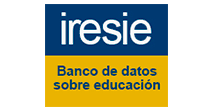SIGNWRITING: a proposta de leitura para alunos surdos pela transcrição da Língua Brasileira de Sinais
DOI:
https://doi.org/10.5216/ia.v43i3.50212Abstract
Uma nova estratégia de ensino baseada na transição direta dos sinais da Libras – Língua Brasileira de Sinais, denominada “SIGNWRITING”, apresenta-se como importante instrumento pedagógico para alunos surdos. Neste sentido, este artigo objetiva identificar como essa estratégia se constitui instrumento pedagógico para o estímulo à leitura de crianças surdas. A metodologia empregada é revisão bibliográfica (STUMF, 2005; CAPOVILLA, 2005; NOVAES, 2014) e documental. Conclui-se que o “SIGNWRITING” é de significativa importância no desenvolvimento de alunos surdos, fazendo com que consigam, de forma mais aprimorada, adquirirem a sua própria Língua de Sinais – e ao mesmo tempo a Língua Portuguesa enquanto segunda língua – a partir da leitura realizada com esta forma de transição dos sinais.
Downloads
Downloads
Published
How to Cite
Issue
Section
License
Inter-Ação uses the Creative Commons Attribution 4.0 License for Open Access Journals (Open Archives Initiative - OAI) as the basis for the transfer of rights. Open access means making documents available on the Internet free of charge, so that users can read, download, copy, distribute, print, search, or link to the full text of documents, process them for indexing, use them as input data for software programs, or use them for any other lawful purpose, without financial, legal, or technical barriers.
Authors publishing in this journal agree to the following conditions:
1) Authors retain copyright and grant the journal the right of first publication, with the work simultaneously licensed under the Creative Commons Attribution License, which permits redistribution of the work with attribution and first publication in this journal.
2) Authors are permitted to enter into additional, separate agreements for non-exclusive distribution of the version of the work published in this journal (e.g., for publication in an institutional repository or as a book chapter), with attribution and first publication in this journal.
3) Authors are permitted and encouraged to publish and distribute their work online (e.g. in institutional repositories or on their home page) at any time before or during the editorial process, as this may generate productive changes as well as increase the impact and citation of the published work.















